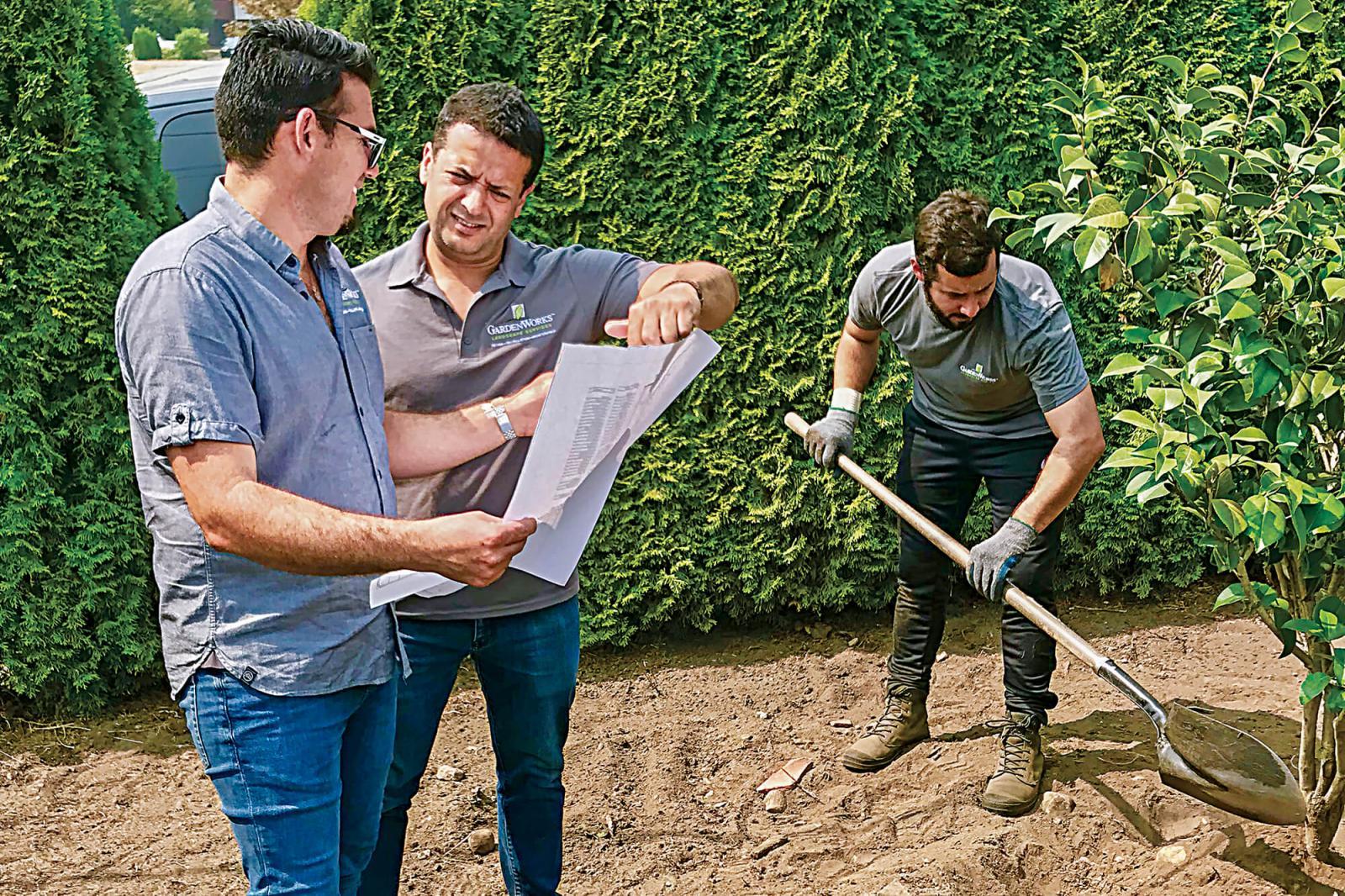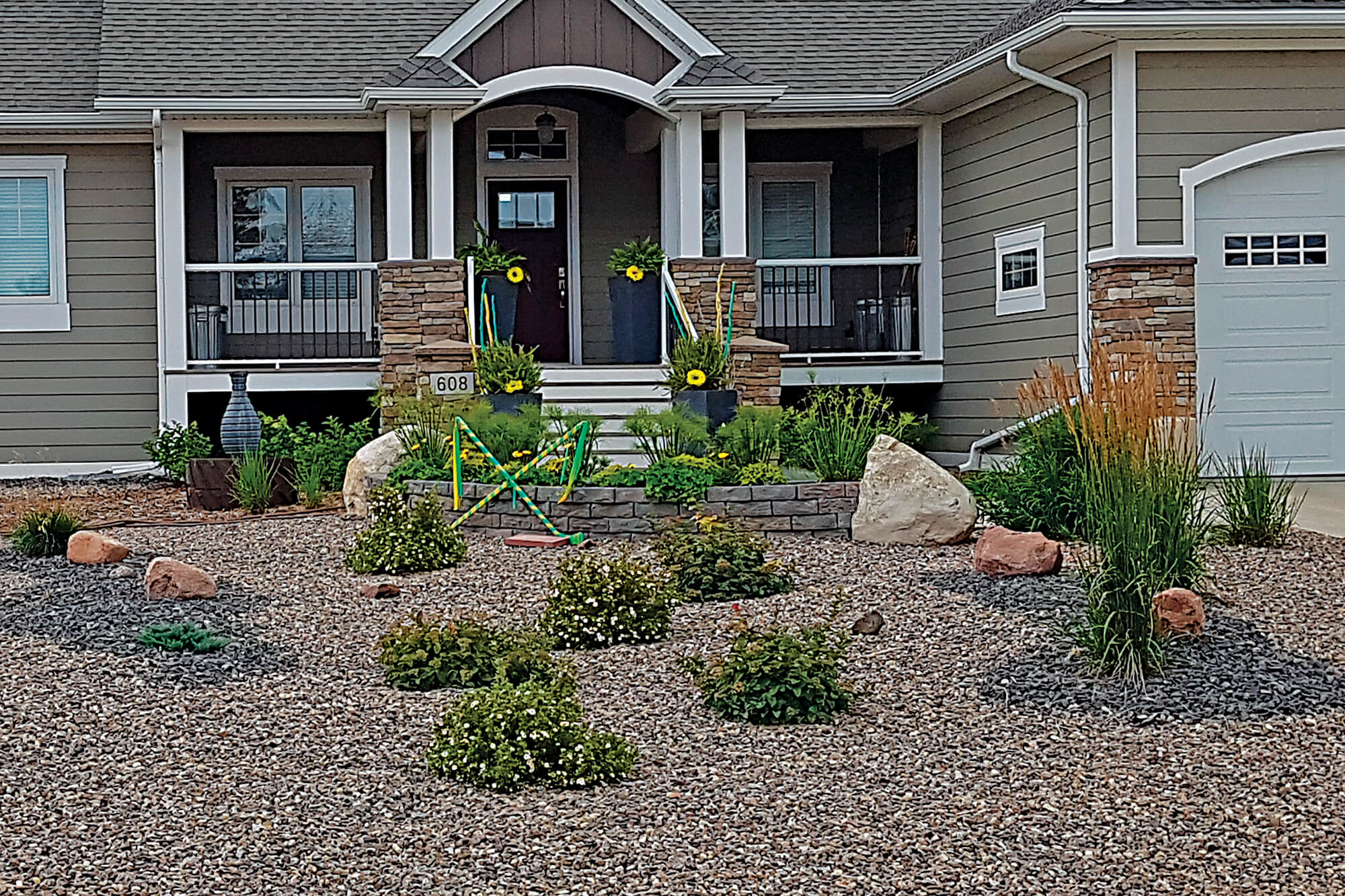October 4, 2018

Garden centres offering complete design and installation services may come as a relief to some customers.
Don't just sell it - Design it and build it!
Garden centres add value with design/build services
BY LORRAINE FLANIGAN
In a climate of increasing competition, garden centres have been diversifying in an attempt to extend the seasonal nature of sales as well as to offer complementary add-on products and services. Several garden centres have boosted revenues and added value to their customer experience by establishing a design/build division. The keys to their success are remarkably similar even though their operations span the country. For this story, we talked to Audriana Vander-Werf, lead landscape designer at Bradford Greenhouses Garden Gallery in Springwater, Ont.; Kim and Paul Olson of Broderick Garden Centre in Outlook, Sask.; and Greivin Eli Gonzalez Chaves, head of the landscape design division of GardenWorks in Vancouver, B.C. Here’s what they have to say to garden centre operators considering a move in this direction.
Enhance customer experience
From a consumer perspective, garden centres offering complete design and installation services may come as a relief. “Customers love to wander down colourful aisles, imagining their homes to be as lovely. But for most, that’s where it ends. They may try this plant or that but are not as pleased with the end result as they thought they’d be,” says Audriana VanderWerf. And, rather than searching for a designer who can help them, and then finding a contractor to do the installation, clients can deal with one person from a garden centre they’ve learned to trust. “Clients love that they can deal with just me, and the designing, estimating, product selection and installation is taken care of,” she adds. “One name, one number to call.” GardenWorks Gonzales Chaves offers an in-house design service that helps customers achieve their goals.
GardenWorks Gonzales Chaves offers an in-house design service that helps customers achieve their goals.
GardenWorks’ Greivin Gonzalez Chaves agrees. An in-house design service helps customers achieve their goals from beginning to end, he says. And although his design department created 180 designs last summer and installed only 20 to 30 of these, he maintains it’s just as important to build a relationship with the DIY design customers. That’s why GardenWorks offers a 50 per cent-off coupon for plants these customers buy from the garden centre to complete their GardenWorks designs. And although that revenue flows through the garden centre tills instead of the design department, he regards the transaction as another important step in building a relationship with customers.
At Broderick, the dynamic is reversed. Landscaping was the main family business, and the garden centre has expanded, partly to supply the burgeoning landscaping business, which now accounts for half of overall revenues from the combined garden centre and crafts and quilting departments. “It works both ways,” Kim explains. Garden centre customers may come in for plants and find out about landscaping services, while customers who come in to talk about laying a stone patio or installing an irrigation system may discover how much plant material is available in the garden centre. So, customers of one part of the business often become consumers of the other, providing growth for both sectors. “When we can offer that full service deal,” says Kim, “it makes it more attractive for people.”
 At Broderick, social media has proved a successful marketing tool, with one design receiving 1,600 views on Facebook.
At Broderick, social media has proved a successful marketing tool, with one design receiving 1,600 views on Facebook.
Support retail operations
Overall operations are enhanced through synergies between the garden centre and design/installation businesses. Although Audriana at Bradford isn’t restricted by what’s in stock at the garden centre, she works closely with buyers to find the right plants for her clients’ designs. “But it works both ways,” she says. “If a section is overstocked, I can help move the product through my designs.”At Broderick, Paul has expanded the scope of supplies sold through the garden centre, especially the hardscaping materials he needs for his landscaping projects. “Because we have a retail operation and we’re in a small market, the suppliers set us up not as a contractor but as a distributor,” Paul explains, which has the advantage of higher markups.
Greivin at GardenWorks encourages sub-contractors to purchase plant material from the garden centre. When prices fall short of the wholesale sources contractors might buy from, he’ll negotiate the contracting fee to make it more financially equitable overall for the contractor. That may mean a lower revenue stream to the design division, but it benefits the company’s total revenues by keeping plant sales in-house.
Manage the project
Whether a garden centre has its own crews, like Bradford and Broderick, or it contracts out to local landscaping companies, as is the case with GardenWorks, our experts agree that managing projects well is vital to their success. “If the designer isn’t a project manager,” explains VanderWerf, “perhaps the foreman is, or a third person, but it’s a necessary role.” When an experienced 14-year employee left Broderick this summer, Paul Olson couldn’t have managed all the projects the company had on-the-go without software he discovered at a trade show earlier in the season. It handles work orders, quotes, work crew assignments and timesheets, allowing Paul to oversee operations from his smartphone. “It’s been a huge savings,” he says. “Having the right tools, whether mechanical or electronic, makes such a difference in your production.” Audriana VanderWerf, lead landscape designer at Bradford Greenhouses Garden Gallery, says the crew needs to be experienced to bring the design to life.
Audriana VanderWerf, lead landscape designer at Bradford Greenhouses Garden Gallery, says the crew needs to be experienced to bring the design to life.
The second key to operational success is quality workmanship, says Audriana. “The installers need to effectively bring the design to life, and this means the crew should be experienced and diligent to represent the design and the company well.” For Greivin at GardenWorks, where the installation is contracted out, this means being very selective. He interviews prospective landscapers, examining three of their projects and talking to their clients. Once on the approved list, installers have an opportunity to bid on GardenWorks projects. Greivin may receive eight to 15 bids, depending on the size and nature of each project. From these bids, he presents three to the client. “Customers always want the lowest cost,” he says, “but I try to recommend companies based on comfort with the project and the client.” Once selected, Greivin oversees the project, ensuring that all aspects are carried out to the satisfaction of both the client and the installer. “I build relationships. We become a family.”
Get the word out
Marketing the design and installation service takes many forms, from targeted e-blasts and social media to more conventional printed flyers and in-house signage. At Broderick, social media has been the best method by far. “We posted a photo of a firepit on Facebook that we designed for a private residence at a nearby cottage resort and got 1,600 views,” says Kim. “That’s very significant in a town with a population of 2,500.”At GardenWorks, free 20-minute in-store consultations offer a way for customers to get to know the company and its services. “Be friendly, be you, be trustful,” says Greivin. “People need to feel safe and see what you can do.” Building this trust is key to success, he says.
 Broderick’s Paul and Kim Olson created a retail offering to supply their expanding landscaping business.
Broderick’s Paul and Kim Olson created a retail offering to supply their expanding landscaping business.
Do the research
Before launching a design/build service, our experts’ advice is to do your research. “Go to landscape shows where you can rub shoulders with suppliers to see what’s new,” advises Broderick’s Paul Olson. Read magazines and look at Pinterest, he says, to find out what people are looking for. Bradford’s Audriana VanderWerf recommends asking, “What is the demand? What are the demographics?”Just as important is hiring the talent. Are knowledgeable and experienced designers and installers available? “You can’t do it all yourself,” says Kim Olson. But the seasonal nature of the business may be one of the toughest hurdles to a successful operation. Once you have the talent, think about how to handle the down times of the winter months.
Rather than bemoaning the challenging retail environment, all three of our companies are generating new sales by expanding service, and putting customers first.
Lorraine Flanigan is a Toronto-based garden and horticulture industry writer.